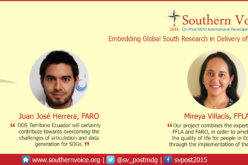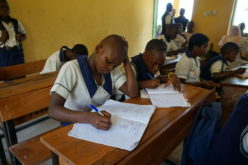Financing the Post-2015 education agenda – how to ensure there are enough resources to get all children in school and learning?
Written by Rob Doble, Education Adviser in Save the Children’s policy and advocacy division and Yousra Semmache Education Policy & Advocacy Assistant, Save the Children UK
An ambitious new Post-2015 education agenda
As the deadline for the Education for All (EFA) and Millennium Development Goals (MDGs) approaches, it seems very unlikely that these current education goals will be met. The number of children of primary school age who are out of school has reduced from 99.8 million in 2000, to around 58 million, but progress has stalled and 250 million children are leaving school without basic reading and numeracy skills.
It seems fairly certain that we will have a much more expanded and ambitious education agenda under the Post-2015 framework. Indeed, the goal and targets included in the draft framework being negotiated in NY (Goal 4 for education), and the proposal from the education community (the Muscat Agreement) – cover pre-primary education, primary education, lower secondary, skills and equity, and much more. This is fantastic in terms of level of ambition, but does raise serious financial implications that we need to address to ensure these targets are not just empty promises.
How much will it cost to meet the new targets by 2030?
Today, the EFA Global Monitoring Report (GMR) team have published an important policy paper, where they analyse the levels of finance required to meet the new Post-2015 education agenda targets by 2030.
Its key findings reveal that:
-Achieving the new pre-primary and basic (primary and lower secondary) education targets is projected to cost US$239 billion per year between 2015 and 2030. This would be a huge increase compared to the US$100 billion total cost in 2012 – and in particular the annual total cost will more than triple for low income countries.
-For this, low income countries will need to spend 5.4% of their GDP on education between 2012 and 2030 – increasing their spending from 2.3-3.4% of GDP.
-But this won’t be enough: the financing gap between available domestic resources and the amount necessary to reach to new targets will reach US$22 billion per year between 2015 and 2030. For low income countries, that means 29% of the annual cost is unlikely to be met even with the right amount of spending on education.
How to meet this financing gap? Need for clear education finance targets.
These new findings reaffirm the need for a clear and strong education financing target within the Post-2015 education agenda, both for domestic and donor education finance.
The Muscat Agreement, and further backed up in regional education consultations that have taken place in recent months, proposes a clear education financing target. For national governments, this target is at least 4-6% of GDP or least 15-20% of their public expenditure to education, prioritising groups most in need. The regional consultations have also called on donors to step up their financing for basic education too. This is especially important given trends over past few years showing how aid to education has been declining.
Despite the education community vocalising this need for clear financing targets, it has not been included in the draft framework being negotiated in NY. Member States need to ensure this is corrected, or at least that there are strong commitments made in Addis at the Financing for Development summit in July 2015, which show that the Post-2015 targets are not just pipedreams.
As the Muscat Agreement states: “the full realisation of the Post-2015 education agenda will require a strong commitment by both governments and donors to allocate adequate, equitable and efficient financing to education”.
We also need to consider what the international architecture for education financing should look like in the Post-2015 education agenda. How do we ensure the Global Partnership for Education (GPE) is fully funded to achieve its mandate? And should GPE’s mandate expand to fit the Post-2015 education agenda? How does financing for education in emergency situation fit with this? It has been woefully low historically , and this needs to be corrected it we are to meet the new education targets by 2030.
Prioritising equitable financing for education
The risk with such an expanded Post-2015 education agenda, is that countries and donors do not take a holistic approach to implementing the agenda, and instead cherry- pick the elements of the framework that they like the most. A certain amount of this is understandable given the differing contexts and educational priorities of countries. However, Save the Children believes that it should a universal requirement that equity be at the forefront of implementation of the Post-2015 education agenda, so that no target is considered met unless met for all. This means that countries and donors need to ensure there are budgeted plans in place that prioritise the needs of the most marginalised.
This newly calculated “price” of the most important education targets raises questions that we will all need to address in the coming months, to make sure we are able to fully realise the ambition of the Post-2015 agenda, and get all children in school and learning.
16,136 total views, 1 views today







